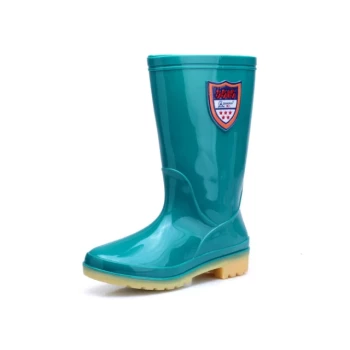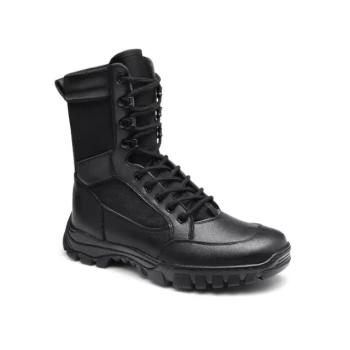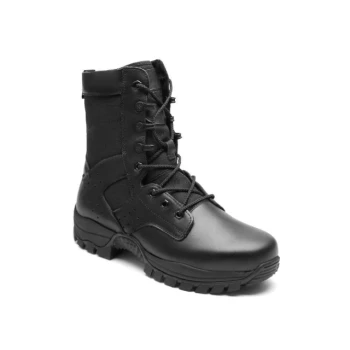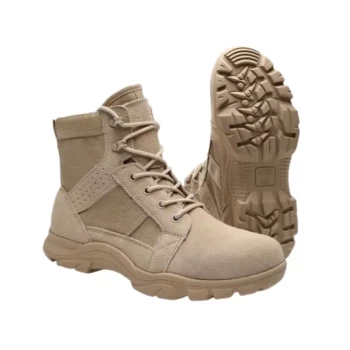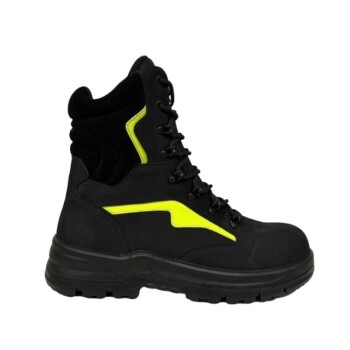Properly fitting riding boots requires more than knowing your shoe size; it involves measuring your calf, trying them on in the afternoon with your specific riding breeches and socks, and ensuring a snug fit that allows for toe movement while securing your heel. For tall boots, this process is critical for both comfort and effective communication with your horse.
The goal of a riding boot isn't just to fit your foot—it's to create a seamless connection between your leg and the horse. A correct fit is a non-negotiable component of safety, comfort, and effective riding.
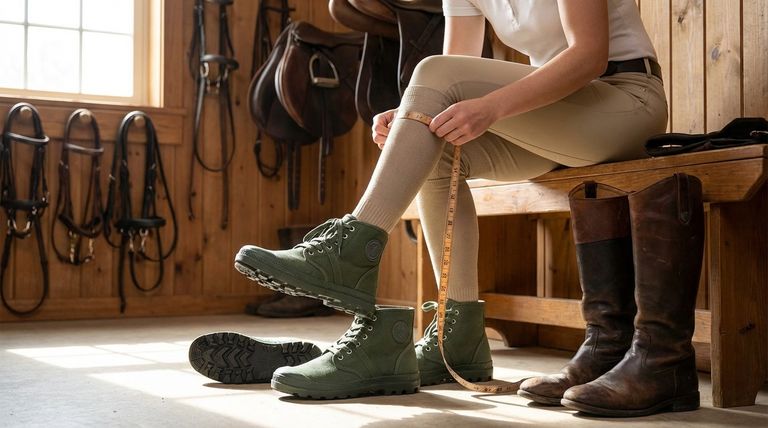
The Foundation: Preparing for the Perfect Fit
Before you even try on a pair of boots, a few preparatory steps will dramatically increase your chances of finding the right fit. Setting the stage correctly prevents common mistakes.
Measure at the Right Time of Day
Your feet naturally swell and expand throughout the day. Always shop for boots in the late afternoon or evening to measure your feet when they are at their largest, ensuring a comfortable fit at all times.
Wear Your Riding Attire
The thickness of your breeches and socks significantly impacts how a boot fits, especially a tall boot. Always wear the exact attire you ride in to get a true and accurate assessment.
Know Your Key Measurements
For tall boots, two measurements are crucial. Use a soft measuring tape to find the widest part of your calf. Then, while sitting with your knee bent at a 90-degree angle, measure the height from the floor to the crease behind your knee. These two numbers are essential for finding the right shaft.
Assessing the Fit In-Store
Once you have the boots on, you need to evaluate how they feel on your foot and leg. A proper fit is a balance between being secure and allowing for necessary movement.
The Toe Box: Room to Wiggle
Your toes should never be jammed against the end of the boot. You should have enough space to wiggle them freely, which prevents discomfort and pressure during long rides.
The Heel: Snug, Not Slipping
Walk around in the boots. Your heel should feel securely cupped with minimal to no slipping or lifting. Excessive heel lift can cause painful blisters and indicates the boot is too large or the wrong shape for your foot.
The Instep and Arch: Secure Support
The boot should feel snug across the top of your foot (the instep) and provide adequate support for your arch. The shape of the boot must match the shape of your foot to prevent pressure points.
The Calf and Shaft: A Second Skin
For tall boots, the shaft should be very snug, like a second skin, without being painfully tight or cutting off circulation. This close contact is what allows you to give subtle cues to the horse with your calf.
Understanding the Trade-offs and Common Pitfalls
Finding the perfect boot involves navigating a few common challenges. Understanding them ahead of time will help you make a more informed decision.
Confusing "Snug" with "Too Tight"
A new leather boot, especially a tall boot, should be very snug. It will feel tight at first, but it should not cause sharp pain or create significant pressure points. The leather needs to be tight enough to mold to your leg as it breaks in.
Forgetting the Break-in Period
High-quality leather boots will stretch and soften with wear. Tall boots are designed to "drop" an inch or two at the ankle as they break in. This is why a new boot may feel uncomfortably tall behind the knee initially.
Fitting to Your Smaller Foot
Almost everyone has one foot that is slightly larger than the other. Always fit the boot to your larger foot to ensure all-day comfort. You can add a thin insole to the smaller boot if needed.
Making the Right Choice for Your Goal
The ideal fit may vary slightly depending on your riding discipline and frequency. Use your primary goal to guide your final decision.
- If your primary focus is comfort for casual riding: Prioritize a comfortable footbed and a slightly more forgiving fit in the calf, ensuring no painful pressure points from the start.
- If your primary focus is performance and daily riding: Opt for the snuggest possible fit in the calf and ankle that you can tolerate, as this provides the best connection and will mold perfectly to your leg over time.
Ultimately, the right riding boot becomes an extension of your body, enhancing your ability and ensuring your safety in the saddle.
Summary Table:
| Key Measurement | What to Check For | Ideal Fit |
|---|---|---|
| Toe Box | Wiggle room for toes | Toes should not be jammed; able to wiggle freely |
| Heel | Heel lift when walking | Minimal to no slipping; heel should feel cupped |
| Calf (Tall Boots) | Snugness around the widest part of calf | Like a second skin, without cutting off circulation |
| Instep & Arch | Pressure and support | Snug and supportive, matching the shape of your foot |
Ready to Find Your Perfect Fit?
As a large-scale manufacturer, 3515 produces a comprehensive range of equestrian footwear for distributors, brand owners, and bulk clients. Our production capabilities encompass all types of riding boots, ensuring quality, durability, and precise fit for riders of all disciplines.
Let us help you provide your customers with the perfect boot. Contact our expert team today to discuss your manufacturing needs and discover how we can support your business.
Visual Guide
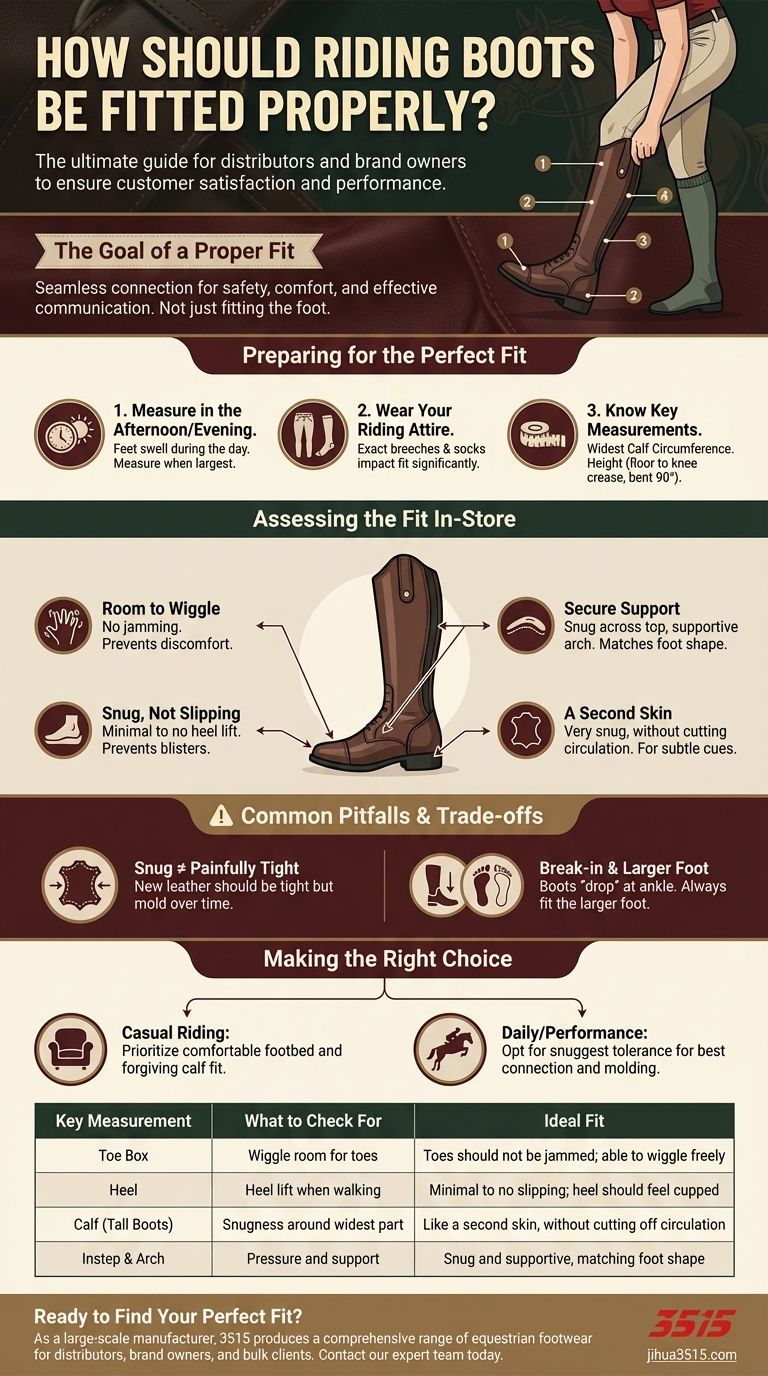
Related Products
- Factory-Direct Wholesale Canvas Boots with High-Traction Rubber Soles
- Safety Footwear Wholesale Manufacturer for Custom OEM/ODM Production
- Wholesale High-Traction Camo Boots - Custom Manufacturer for Brands
- Premium Wholesale Waterproof Safety Boots High Performance Protection for Industrial Markets
- Customizable Anti-Smash Safety Boots for Wholesale & Private Label Manufacturing
People Also Ask
- What are the advantages of rubber soles in safety boots? Unbeatable Grip & Durability
- Why is rubber a popular material for shoe soles? Unbeatable Grip, Durability & Value
- Why are rubber soles beneficial in cold-weather boots? Superior Traction & Waterproofing
- What role do slip-resistant rubber materials play in safety shoes? Ensuring Grip and Stability in Hazardous Workplaces
- What types of work environments are hiker-style rubber outsoles best for? Ideal for Outdoor & Industrial Safety









